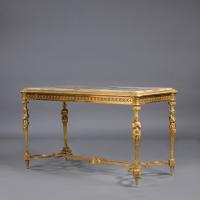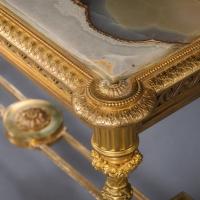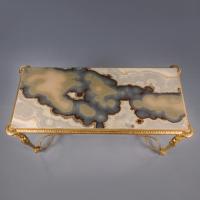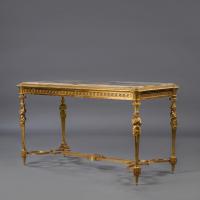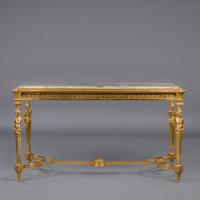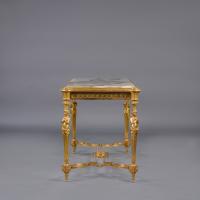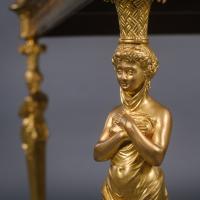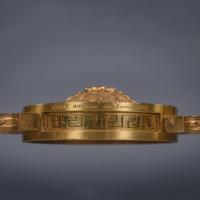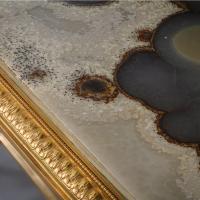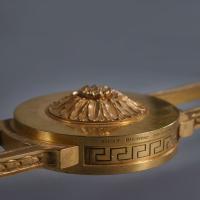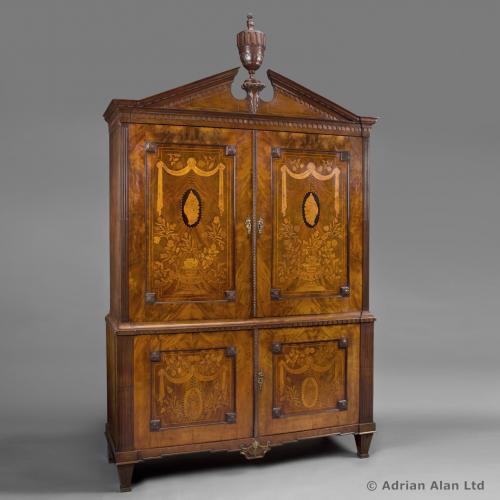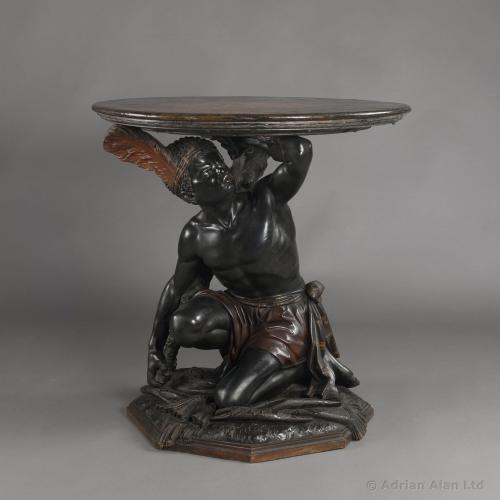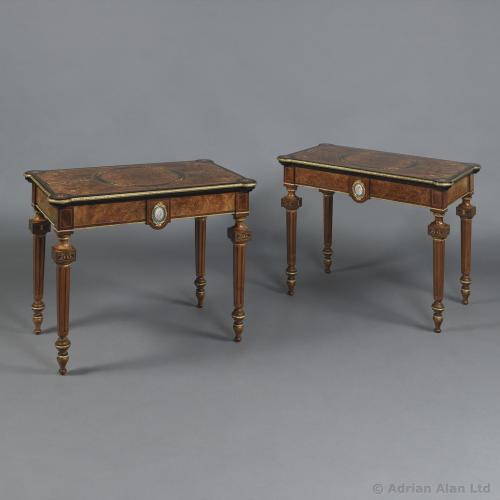
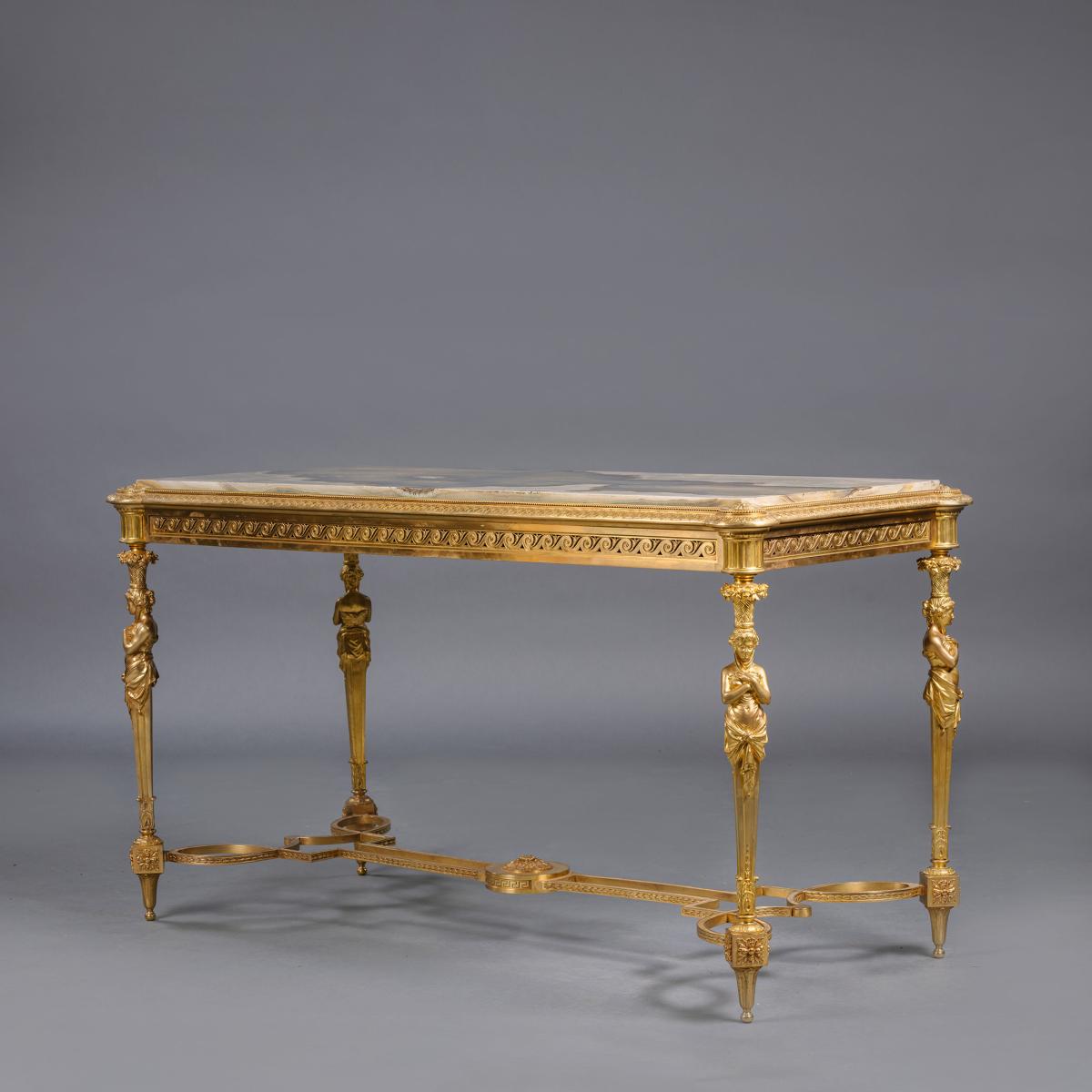
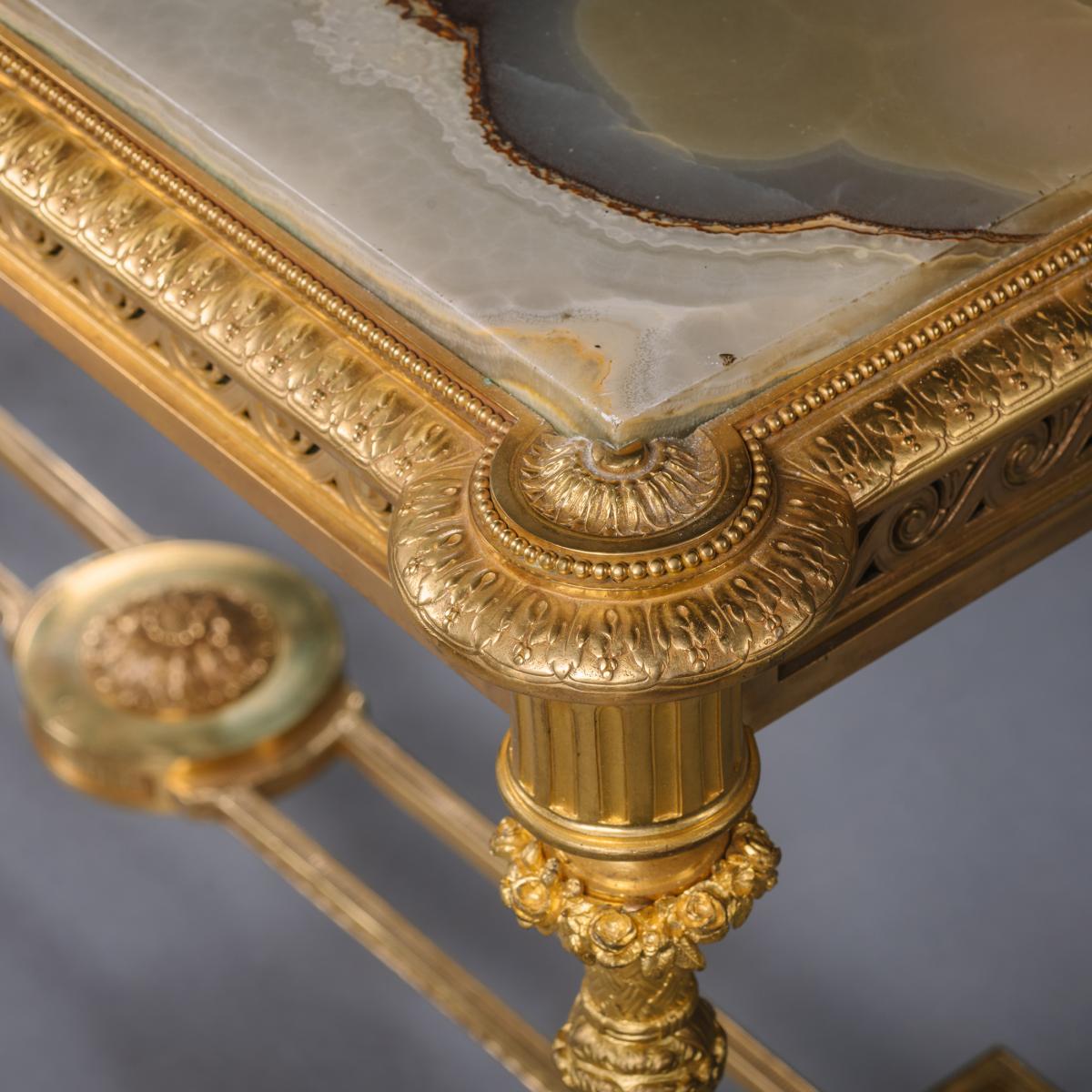
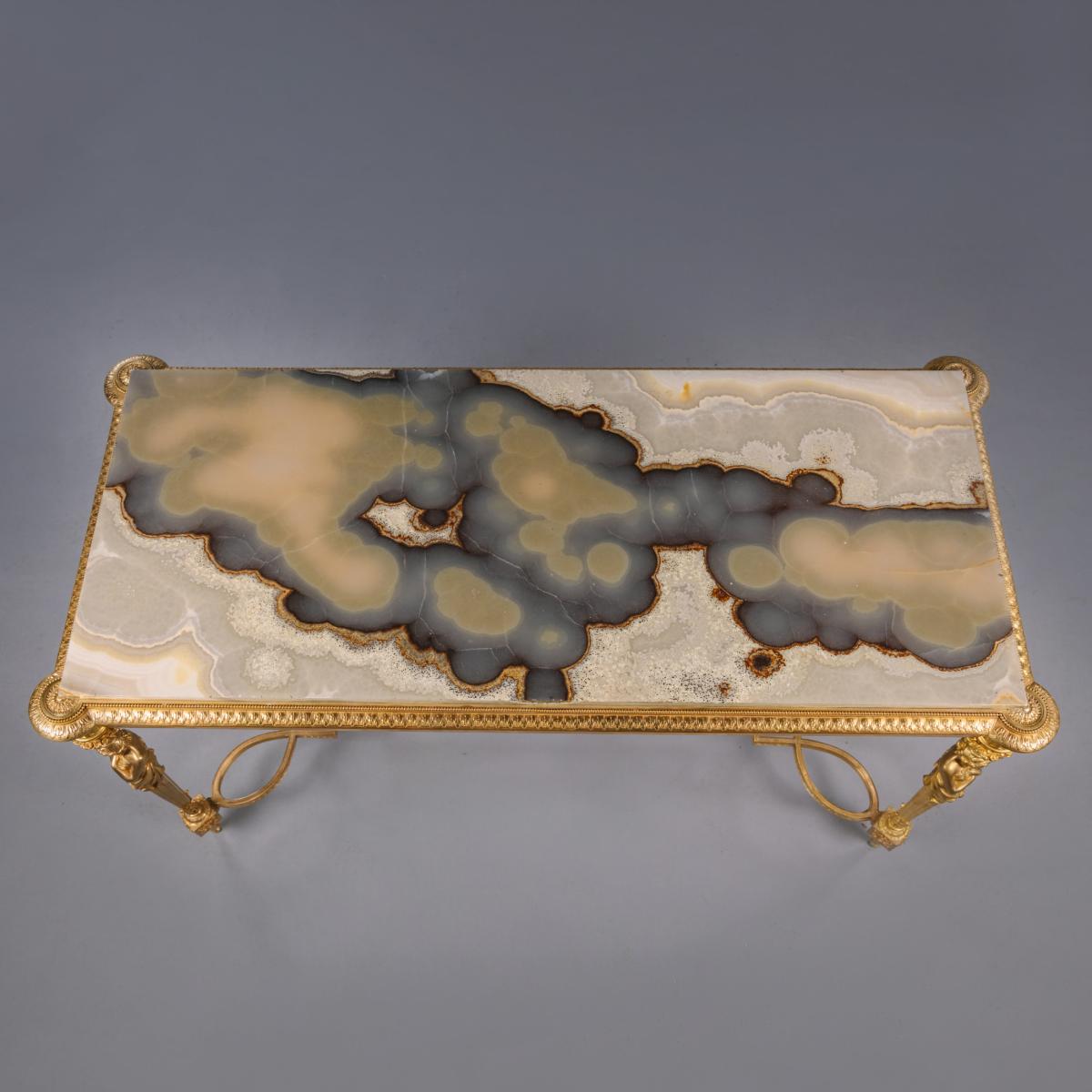
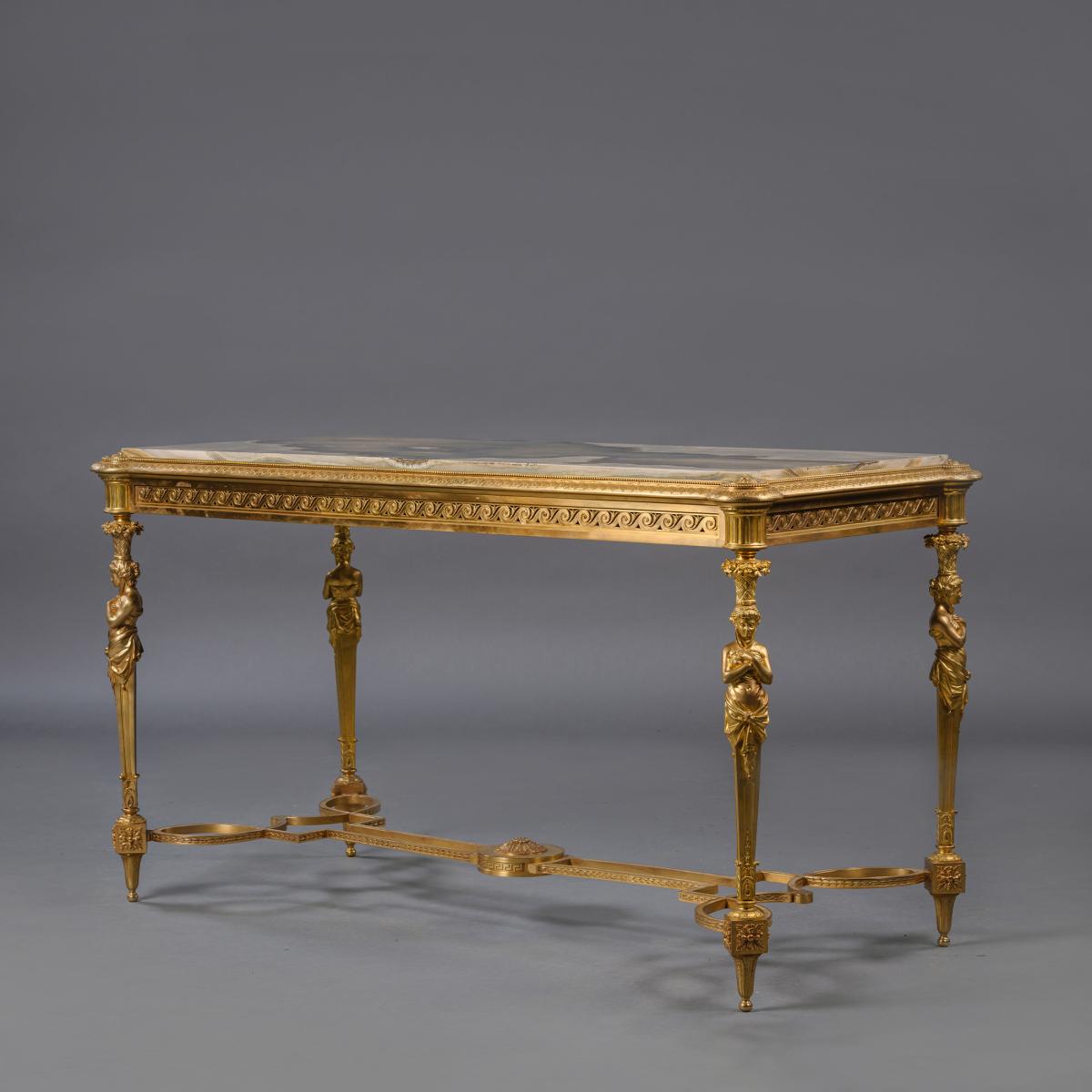
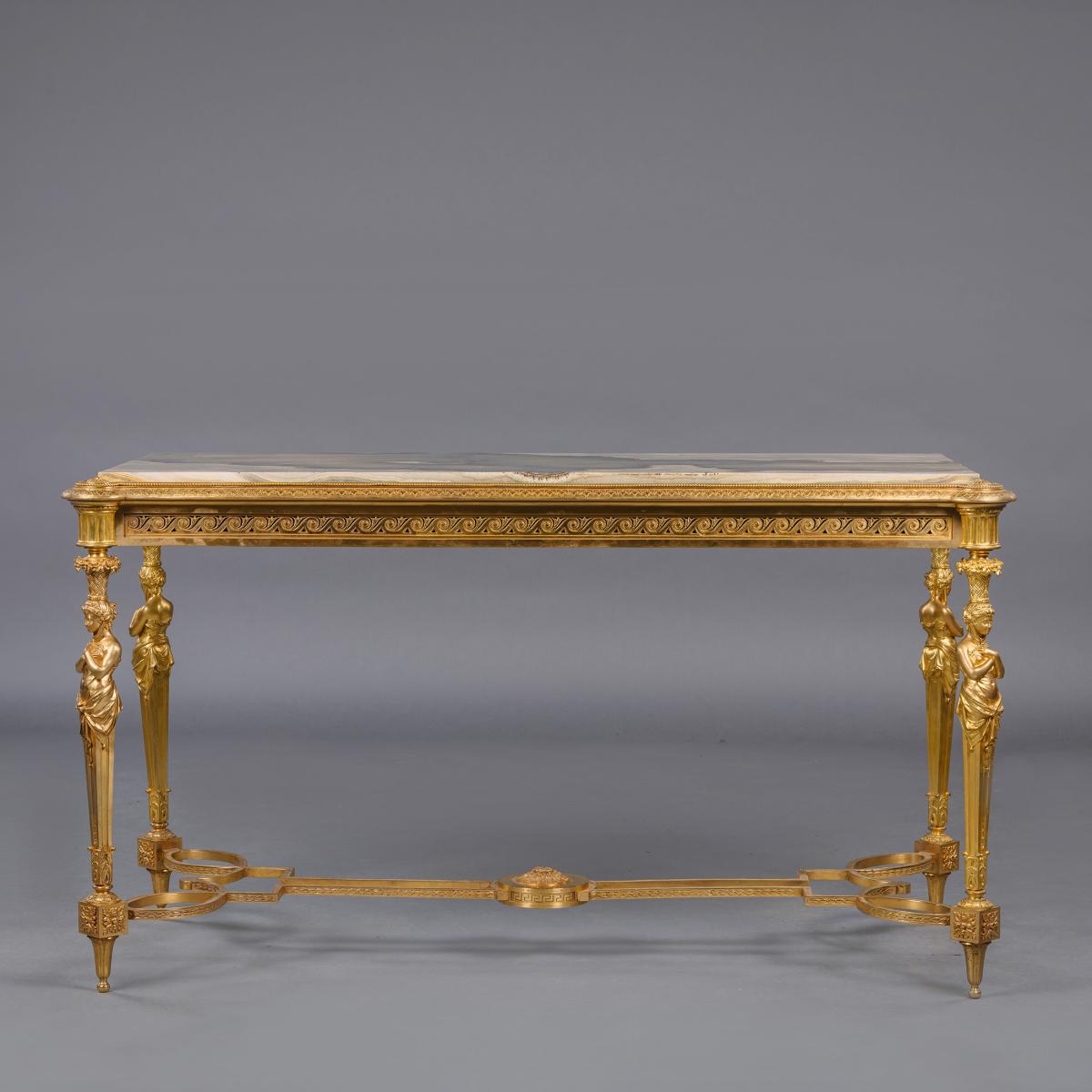
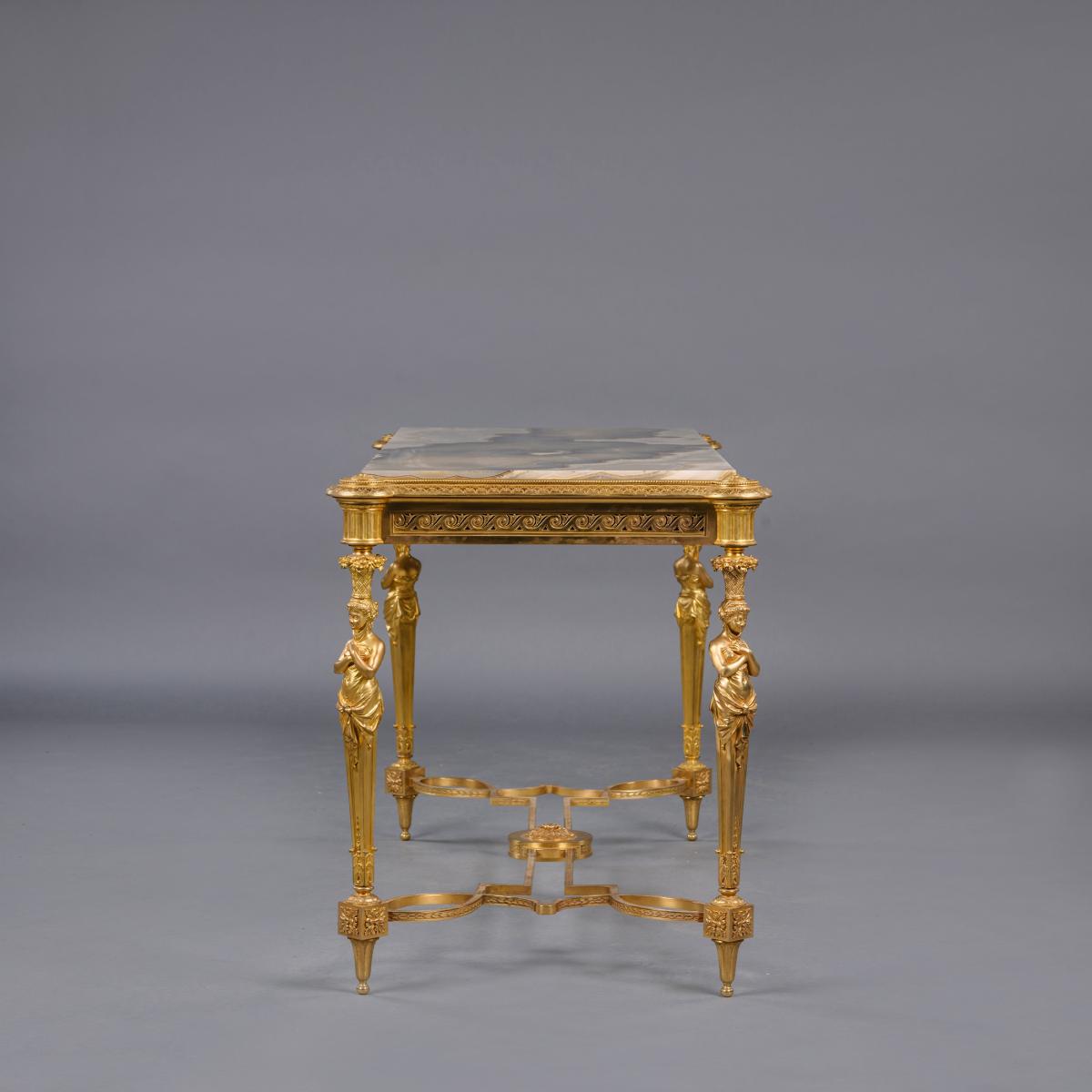
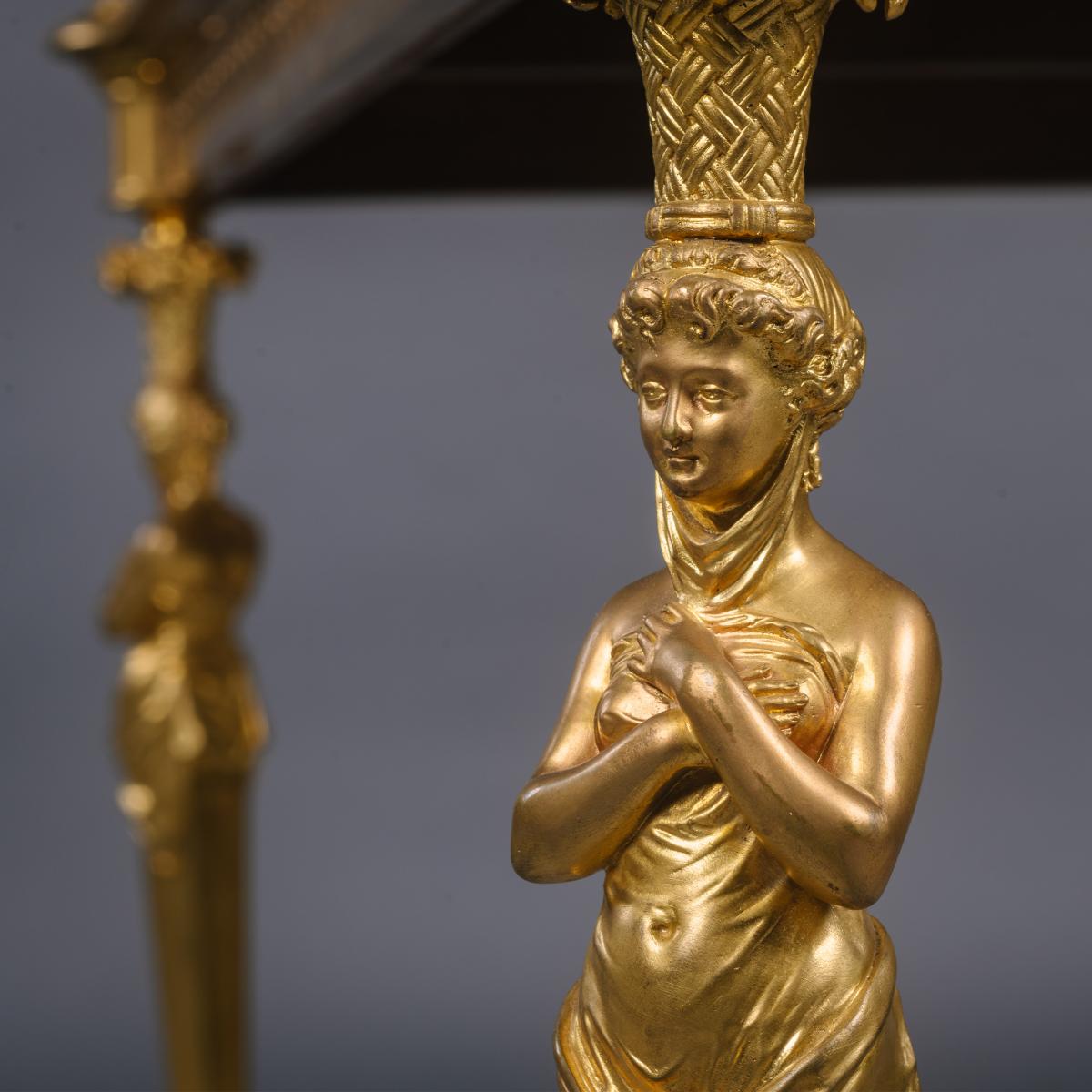
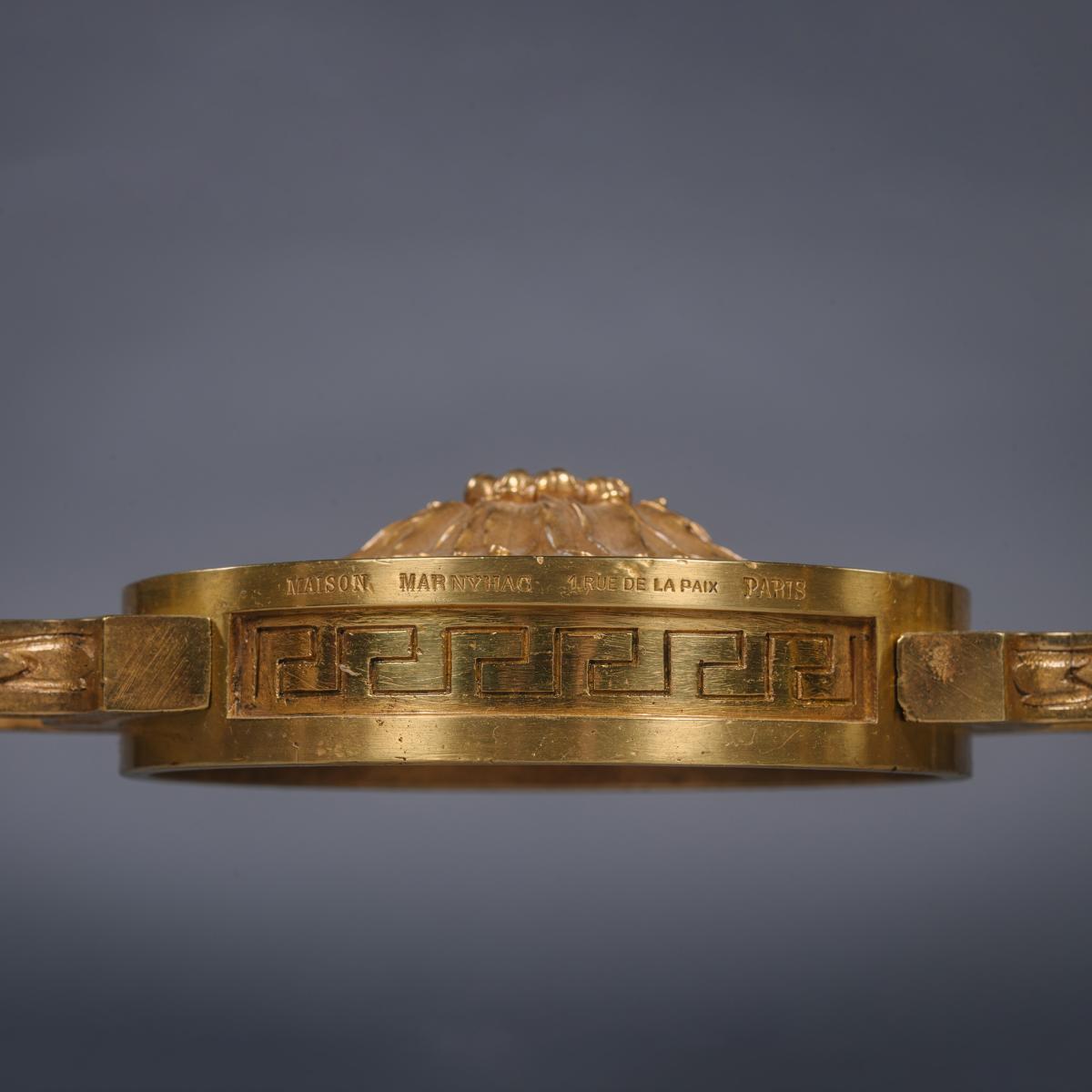
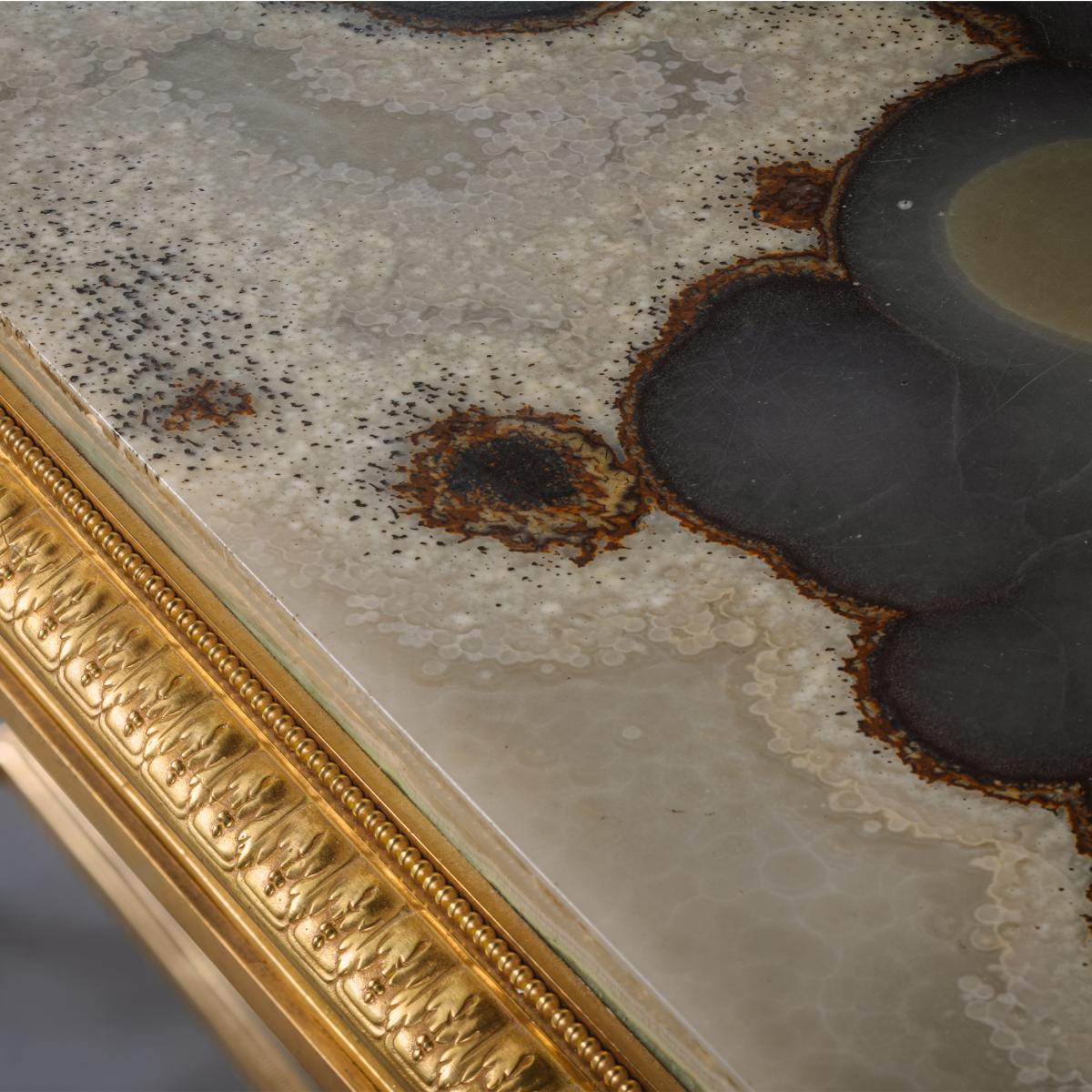
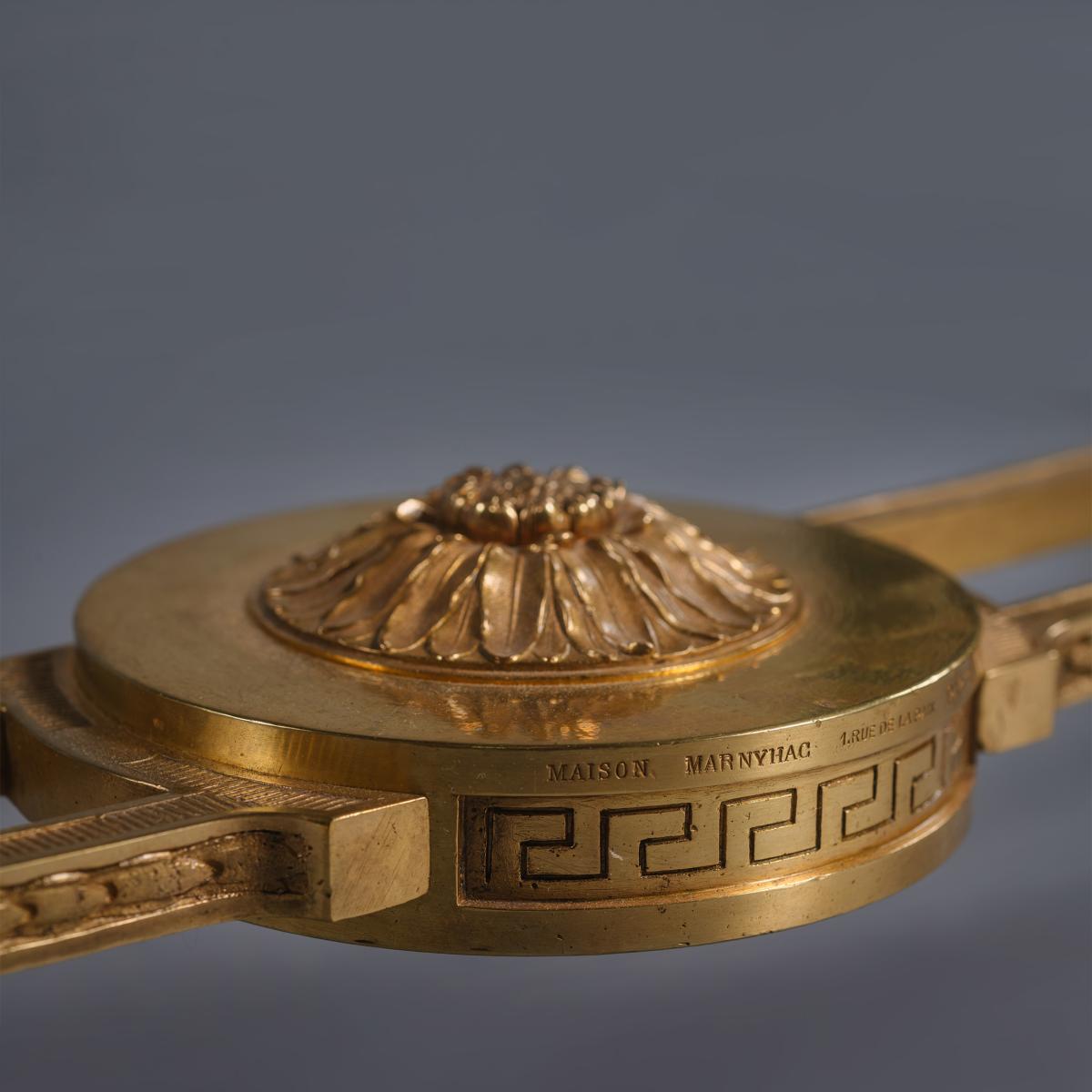
Price on application
This object is eligible for a Certificate of BADA Provenance
The BADA Standard
- Since 1918, BADA has been the leading association for the antiques and fine art trade
- Members are elected for their knowledge, integrity and quality of stock
- Our clients are protected by BADA’s code of conduct
- Our dealers’ membership is reviewed and renewed annually
- Bada.org is a non-profit site: clients deal directly with members and they pay no hidden fees
A Napoleon III Gilt-Bronze and Onyx Centre Table, By Maison Marnyhac, Paris.
Signed to the edge of the stretcher 'MAISON MARNYHAC 1. RUE DE LA PAIX PARIS'.
This opulent centre table has a beautifully patterned onyx top inset within stiff-leaf cast gilt-bronze border and guilloche patterned frieze. The legs modelled as female terms with arms crossed and holding atop their heads flower filled baskets. The lower part of the legs are formed as tapering pilasterrs joined by an elaborate loop stretcher with central platform.
France, Circa 1865
This table is exemplary of the finest luxury furniture made during the opulent Second Empire period. The use of Algerian onyx-marble is especially indicative of this period as it was not until the 1840s that the quarries near Constantine in Algeria, then under French rule, which had been abandoned since antiquity, were rediscovered. Alphonse Pallu et Cie presented the stone at the Exhibition of Algerian Products in Paris in 1860 and established the Compagnie des Marbres Onyx d'Algérie, supplying onyx to bronze makers such as Christofle, Barbedienne and Maison Marnynhac, who collaborated with sculptors such as Eugène Cornu, Charles Cordier and Albert-Ernest Carrier-Belluese to produce architectural ornament and objets luxe. Noteworthy commissions for onyx marble were received for the Château de Ferrières, Hôtel de La Païva, and the staircase at the Garnier Opéra.
The caryatids figures heading the legs are inspired by a table, now in the Louvre, supplied in 1784 by Adam Weisweiler and the marchand-mercier, Dominique Daguerre, to the Garde-Meuble de la Couronne. Having been sold after the Revolution, the Weisweiler table was discovered in a shop on the Quai Voltaire in 1840 by the Prince de Beauvau (d. 1864). Purchased by the Empress Eugénie at auction the year after his death, it was placed in her salon bleu at the Tuileries, where she gave her audiences. Empress Eugénie's interest in Louis XVI and his Queen Marie-Antoinette, led to a revival during the mid-19th century for Louis XVI style furniture, such as tables like this in the goût Weisweiler.
Maison Marnyhac
The maison Marnyhac is the commercial name for the company of marbles and artistic bronze, set up on avenue de l'opera and then rue de la Paix at the end of the 19th century. It specialised in the production of luxury objects and took part in the Universal Exhibition of 1878 where it won a medal and competed with the most famous companies, like Barbedienne. As was said by commentators at the Exhibition of 1878 “Paris has two Barbedienne's, two manufacturers of art that cannot be compared to any others throughout the rest of Europe”. (les Chefs d'oeuvre d'art à l'Exposition Universelle de 1878, dir. Emile de Bergerat, Paris, L. Baschet, 1878, p, 188).
Dimensions
Height : 72 cm 28 inches Width : 129 cm 51 inches Depth : 59 cm 23 inchesStock number
B76290The BADA Standard
- Since 1918, BADA has been the leading association for the antiques and fine art trade
- Members are elected for their knowledge, integrity and quality of stock
- Our clients are protected by BADA’s code of conduct
- Our dealers’ membership is reviewed and renewed annually
- Bada.org is a non-profit site: clients deal directly with members and they pay no hidden fees


